It is Friday, almost three in the afternoon. I find myself in a strange predicament. I have just arrived in Malacca, with no one to exchange my Singapore dollars for Malaysian ringgit. The receptionist in the hotel tells me the moneychanger nearby is closed. She calls a cab driver to drive me around town in search of one. Most of the Indian moneychangers are at the mosque for prayers. The cab driver, my accomplice, parks outside a closed moneychanger’s, patiently waiting for it to open. I stand outside the car, restless. Then something occurs to me: this historic port city has more museums than enterprising moneychangers.
I survey the street around me. I am on Jalan Laksamana, just a short distance from the town centre. Photos of red Dutch buildings in travel books first lured me to come and visit two years ago. Stadhuys, built between 1641 and 1660, was once the town hall and the governor’s residence. It is also said to be the oldest Dutch building in the Far East. Next to it is Christ Church, built in 1753.
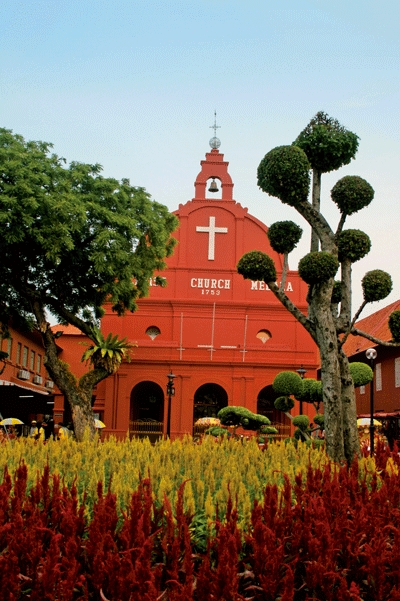
Seeing them for the first time, the buildings did not appear as vibrant as they did in the guidebooks. And the photos didn’t hint at the hectic buzz of activity on this spot. Hordes of tourists stream out of buses, crowding in front of the fountain for the mandatory souvenir shots. The trishaw drivers are all abuzz, waiting for customers in their vehicles ornately decorated with plastic flowers and loud boom boxes.
Brides and grooms parade in their wedding garb, pose for photographs and walk from the town centre to the ruins of St Paul’s Church on the hill, the remains of a church built by a Portuguese captain.
Undoubtedly, these old buildings lure tourists to Malacca. Once a wealthy trade centre connecting trade with China, India, Siam and Indonesia, the city was placed on the Unesco World Heritage list two years ago, acknowledging its over 500 years’ history of trading and cultural exchanges between the East and West. Its multicultural heritage originates in the 15th century Malay sultanate and the Portuguese and Dutch periods, beginning in the early 16th century.
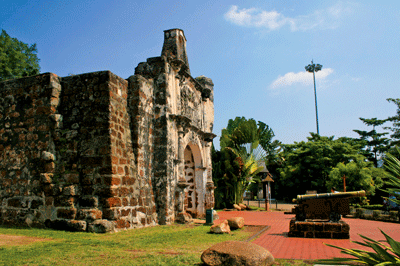
While it was Malacca’s tangible heritage of diverse architecture and varied cuisines that attracted me here two years ago, it was the intangible charm of its people that compelled me to return. Living in a bustling and stressful Asian city lacking in smiles, visiting Malacca proved to be the perfect antidote. My friend and I stayed in Heeren Street. This narrow one-lane road was once the preferred address of wealthy baba (Straits-born Chinese). The houses’ unique architecture usually features a courtyard and an air-well to let the sun, rain and breeze into the long and narrow two-storey homes.
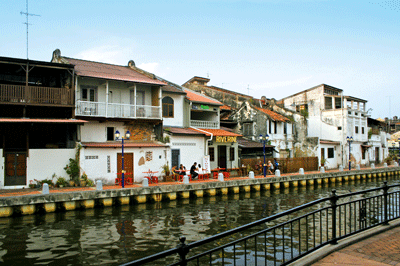
As my friend and I admired the architecture of houses in Chinatown, we peeked into small shops, art galleries and cafés. Unlike the bustling pace of other Asian cities, here the tempo is pleasantly laid-back. Instead of the cold antiseptic welcome of sales girls in city malls, one felt a distinct sincerity and warmth on entering the shops. Often the owners themselves were manning the stores. A few stores remain that sell wooden clogs, hand painted with floral designs – a tradition evolving from the Dutch custom of painted clogs. A husband and wife team welcomes me into their store. The husband puts the shoes together, while his wife paints them. They beam with pride, telling me that their 10-year-old son is learning this dying craft.
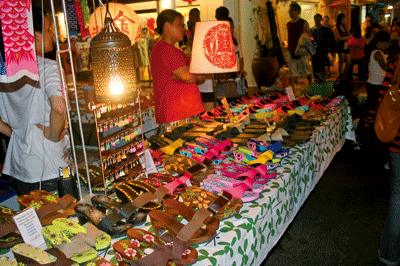
A few steps away from the town centre, Yeetea, the owner of a tea shop, welcomes people into his store with cups of tea. He chats with us and doesn’t mind at all that we are not buying anything. Instead, he offers to show us some old abandoned houses a few streets away. There are pathways between the houses, which were created to prevent fire from spreading from one home to another. As we head back to his shop at sundown, birds hover over the houses. He points to the swallows and swifts, which produce birds’ nests. The bird’s nest industry is still a booming business in Malacca.
The most memorable meal we had was at Hoe Kee, a Chinese rice ball store on Jonker Street. Instead of serving this classic Asian chicken dish with a bowl of steaming rice, they produce small balls of rice infused with rich chicken broth. These tasty bite-size balls once provided a convenient lunch for rubber plantation workers.
Located in an old house, the 46 year old dining institution remains fully packed even after 3pm. At the helm of the restaurant are two sisters, 48-year-old Tan Hin Lee and 49-year-old Tan Hin Luan. They live on the second floor of the restaurant. The 73-year old matriarch from Hainan sits quietly. She smiles as she watches customers enjoying their meal.
As I return to the restaurant, I find myself at the exact table where I sat two years ago. The older sister recognises me. She quickly organises a meal of rice balls and vegetables and a homemade cooling herbal tea for me. After the meal, I pay my respect to the grand lady who concocted this chicken rice ball recipe almost 50 years ago.
Despite a language barrier between us, the warmth is undeniable. We hug like long-lost relatives. She tells to her daughter to ask me, “Is she married? I think she’s beautiful … she should be married.” Luan agrees, “Yes, you should get married and have children.”
It may be a different language and culture, but they conveyed the same message any family would do. The sisters warmly bid me goodbye, sending me off with a free glass
of tea to refresh me as I walk along Jonker Street, the famous tourist strip.
The Dutch christened it Jonker Straat, meaning Nobleman’s Street. In the 19th century, it became the heart of social and commercial activities and the preferred address of the huay kuan (Chinese clan associations). Now, it is filled with boutiques and souvenir shops. There are mini galleries selling paintings by local artists such as Charles Cham, a Malaccan artist who trained in France and has three galleries in town which sell his modern art. There are shops selling Nonya dumplings, the famed pineapple tarts, and there are cafés and backpacker hostels.
Perpendicular to Jonker is Heeren Street, the exclusive residential area of the Straits Chinese. I arrived a few minutes before the next tour at the Baba Nonya House. Once owned by a spice trader, the 114 year old house had been converted by his great-grandson into a museum. It celebrates the unique Peranakan culture of Straits-born Chinese.
Like most houses of that period, the structure is narrow and long, as they were taxed based on the width of the house. The tour imparts interesting nuggets of culture unique to the Peranakans. There is a dark hall, where single ladies used to sit and view visitors from behind a curtain. A peephole on the second floor let the family screen their guests below. The security door prevented robbers from entering the second floor, babies from falling down the steps and husbands from having affairs. The exhibition has an extensive collection of Nonya wedding clothes, English teapots, traditional sarong and kebaya dresses and even kitchen utensils to make laksa noodles, chendol and handmade ice cream.
Continuing the history lesson, we stayed at the Majestic Malacca. In the 1930s, it was the private mansion of a prominent businessman and was turned into a hotel in 1952. Restored and opened as a luxurious boutique hotel in 2008, it exudes nostalgic old world service and the mood of the colonial era. Honouring the rich heritage of the hotel, they have an in-house historian, Donavan Casimir Louis, who offers guests a two-hour long tour every day.
The tour begins at the hotel and continues across the street along the boardwalk on the banks of the Malacca River. Large monitor lizards lurking by the river interrupt our tranquil stroll. As we walk along the river, the passionate historian points out historic buildings such as the Old Cathay Cinema from the 1950s, the Ghost Bridge which witnessed a gory past during the Japanese occupation, the St Francis Xavier church, leaning to the right, and some already familiar sights: Christ Church, The Stadhuys and St Paul’s Hill. He points to some shanty dwellings by the river, only to reveal that the Chinese fishermen residing here are actually much richer than they appear to be. He wants to illustrate how understated people in Malacca are: they are not ones to flaunt their riches.
Weary from the long and hot day, I succumb to the touristy MYR15 (USD$4.70) trishaw ride back to the hotel. Uncle Singh, a Punjabi, has been doing this for 27 years now. His children are now adults working in Kuala Lumpur. Being a trishaw driver is a dying tradition, he says.
Just like enjoying a museum, Malacca requires one to spend ample time on paying attention to the details. It means going on walks around town to gaze at the tiles and to appreciate the architecture. Heeren Street has less than 40 houses left used as residences, with many structures in shambles.
An enterprising Korean introduced the fish spa to Malacca a few months ago. Sitting with their feet submerged in a small pond in the courtyard, weary travellers get to rest while hungry doctor fishes eat their dead skin cells. At only MYR7 (US$2.20), it is a steal for a 30-minute foot spa. It is a relaxing exfoliating experience once you get over the tickling sensation of fish nibbling on your toes. It is definitely a fun way to enjoy the old houses’ functional architecture.
For a more traditional Peranakan pampering experience, the Spa Village Malacca is the only spa to offer the unique combination of Chinese and Malay influences. Intricate woodcarvings, porcelain pastel Nonya tiles, and Peranakan Chinese daybeds set the mood.
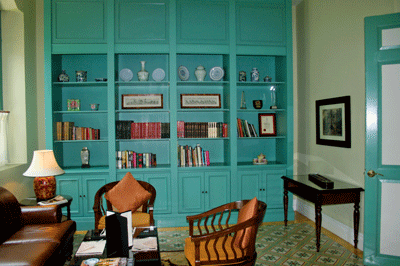
The experience begins with a soothing hair treatment ritual, inspired by the traditional 12-day Peranakan wedding ceremony. The bride’s hair is washed, massaged, and gently combed. While gazing up at the ceiling with TV screens playing Malaysian actor P Ramlee’s black and white movies, the attendant applies a refreshing calamansi (lime) juice rinse.
Spa treatments balance a person’s cool or warm energies. The delicious blend of toasted nutmeg and rice pounded all over my body eased my aches and pains, while the blend of ylang-ylang, orange, clove, ginger and patchouli oils induced me into a deeply relaxed state.
With so many different cuisines available in Malacca, there are not enough days to sample all Peranakan, Portuguese, Chinese, Indian and seafood specialties.
Once the sun sets, several places serve bubbling vats of satay sauce with many different skewered seafood and vegetables for dipping. Satay celup may be Malacca’s own version of a fondue. Seafood restaurants are in abundance. Right along Jonker is Eleven, a hip Portuguese bistro serving sambal crabs, hai san baked fish, the famous devil chicken curry and garlic-chili kangkong.
Evenings provide a perfect time to explore a different side of Malacca. Curious of the Portuguese settlement, we take a taxi there. The houses are more contemporary. While there is a row of seafood restaurants, with aggressive vendors on the prowl awaiting the arrival of hungry tourists, locals prefer to dine in Seafarers, a restaurant along the straits of Malacca.
Try the soupy assam pedas, a fiery sour fish soup, and kangkong belachan, as the sea breeze cools you. To burn off a few calories, we check out Jonkers Walk, a weekend night market. Instead of local crafts, we find mostly the ubiquitous Made in China goods.
With more museums than moneychangers, which ones are worth the visit? Aside from the Baba-Nonya, stop by Villa Sentosa at Kampong Morten, a traditional Malay settlement since 1929 on the banks of the Malacca River.
Rahim Hashim, the 74 year old owner, has endless tales of his ancestral home. The animated host boasts of visits by numerous famous people, including Winston Churchill and Dato’ Othman, King of Malaysia.
The last stop is the Cheng Ho (Zheng He) Museum, with an extensive collection of antiques covering three shop houses along Jonker Street. A detailed video and exhibits highlight the importance of this famous 15th century Chinese explorer. One of the many products this Chinese-Hindu from Yunnan traded was Pu-er tea.
Zheng He Tea House, a glorious residence during the Dutch period, sells tea next door.
Tending to the shop was a 14 year old girl named Jane. Her mother was out doing errands. She sat there along with her older brother and five year old sister, all doing their homework.
It was delightful to see the old Malaccan home in use. When asked if she spent a lot of time here, she said, “Yes, because Malacca’s boring. There’s really nothing to do except shopping and Facebook.”
I knew this was not true. With only minutes left until my bus back to Singapore was set to depart, there was still much I wanted to do in this living historic city.
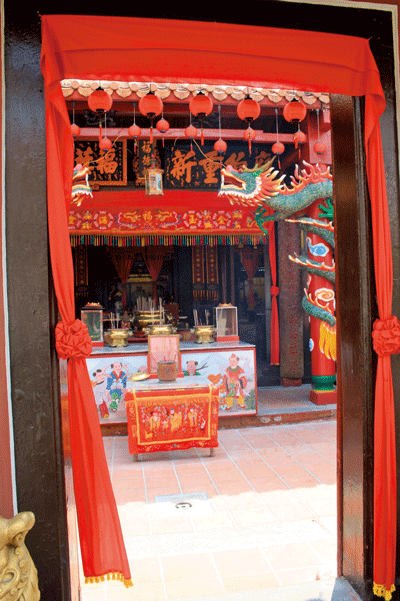
FAST FACTS
Location: On the southwestern coast of Malaysia, Malacca is 150km south of Kuala Lumpur and 260km north of Singapore.
Getting there: Buses from the Transnasional Coach company (www.transnasional.com.my) leave Pudaraya Bus Terminal in Kuala Lumpur every hour to Melaka Sentral Bus Terminal. The trip takes two hours and the fare starts from MYR9.30 (US$3), one way. Other buses that serve Malacca are Delima Express, Jebat Express, Melaka-Kuala Lumpur Express and Metrobus Express.
Several buses depart daily from Singapore to Melaka Sentral Bus Terminal. The most convenient is Luxury Coach (www.luxury.com.sg) departing from the Concorde Hotel with drop offs at the Renaissance Melaka and the Equatorial Melaka in Malakka. Fare starts at S$30 (US$22).








